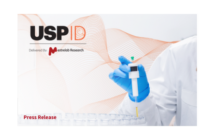I recently had the chance to catch up with qNMR “guru”, friend, and collaborator – Torsten Schönberger (BKA, Germany). After a few “Kölsch” beers, attention naturally turned to the very basic question: what is the best pulse tip angle to use for qNMR experiments?
Of course, it all comes down to collecting the best signal:noise ratio (SNR) in the shortest time. When learning NMR, we are all told that using the “Ernst angle” will afford the best overall result. Therefore, it is quite common for NMR spectrometers to be set up to use a 30˚ read pulse, because this will provide 50% of the signal size, but less time is needed to for the Mz magnetisation to return to nearly equilibrium levels. Thus, if you are applying many pulses in your experiment, you can get away with a shorter pulse repetition rate whilst still deriving quite good relative integral values.
With qNMR, however, things are quite different because (very nearly) complete return to equilibrium magnetisation is an absolute “must” before any read pulse.
Let me illustrate with a simple example. Say your sample’s longest T1 is 1.0 sec. Let’s also assume that we want to be quite fussy and have the M(z) at >99.9% of its equilibrium value before the next read pulse is applied. Let’s assume that the SNR that you need is achieved with 10 pulses when a 90˚ read pulse is used, and finally that the sample has been in the magnet long enough for the equilibrium magnetisation to be achieved before we start the NMR measurement.
So, if we use a 90˚ read pulse, we need to wait ca 7.0*T1 between pulses. The experiment will take 10*7 = 70s.

If, however, we use a 30˚ read pulse then 50% of the available magnetisation will be in the X-Y plane after the pulse and contribute to the signal. We will therefore need 4X as many scans to achieve the same SNR as in the case, above. The time penalty is compounded when we consider relaxation: the time taken for the overall magnetisation to return to >99.9% of its equilibrium value is ca. 6.25*T1. The total time for the experiment is therefore 40*6.25 = 250s – a factor of 3.6 longer than the case of the 90˚ read pulse.
In reality, the signal having the longest T1 in the sample is likely to be up to 10s (or even longer in rare cases) and the practical benefit of using a 90˚ read pulse is actually much larger. We will collect the same signal in 10*70 = 700s as with the small tip angle case of 40 * 62.5 = 2500s, which is the same factor of 3.6.
So, in general, this 3.6 penalty factor is more punishing as the T1 and required number of scans increase.
What if you don’t need to wait for relaxation to be complete?
Let’s consider 3 cases:
- 7*T1 wait between pulses – required for high precision qNMR
- 5*T1 wait between pulses – quite commonly used for conventional qNMR
- 1*T1 wait between pulses – used for counting Hs in standard NMR experiments
| % of full magnetisation | time-saving factor | ||
| 90˚ read pulse | 30˚ read pulse | ||
| 7 * T1 | >99.9 | >99.9 | 3.6 |
| 5 * T1 | >99.3 | >99.7 | 3.4 |
| 1 * T1 | >63.2 | >81.6 | NA |
We see that there is still a benefit to using a 90˚ read pulse when the inter-pulse time is 5*T1. But when this is 1*T1 then appreciable integration inaccuracies will be observed. For standard NMR experiments the Ernst angle rule applies.
Heteronuclear qNMR
The discussion, above, assumes that when using a 90˚ read pulse all signals are very close to having their Mz magnetisation fully placed in the xy-plane. This may not be the case when measuring quantitative spectra of heteronuclei – commonly 13C, 19F, and 31P – where wide spectral widths (sw) may be required to observe all the NMR signals. Now, to ensure that uniform excitation occurs across the entire spectral range it may be necessary to use a shorter pulse length. This can be represented by a “bandwidth factor” number (F). The rule-of-thumb is that the sw should be less than 0.3/pulse width (sec.), ensuring that the intensity variation will be less than 1% of the maximum intensity.
In the plot, below, we see the excitation profiles for 10 us (90˚) and 30˚ pulses. Superimposed on this are typical ranges for the indicated ranges in the case where the 1H frequency is 300 MHz. The horizontal axis is frequency (Hz) from the transmitter, and the vertical shows the fraction of maximum intensity for a square pulse.

Of course, there are excellent practical solutions such as using shaped pulses (CHORUS [1], chirp, etc.) – which have considerably improved overall performance for qNMR in these large sw cases. A further consideration when spectra with large sweep widths are acquired is that signals that are significantly off-resonance suffer effects that reduce their final signal intensity, and cannot be ignored. These effects and approaches to compensation are well described – see, for example, Tim Claridge’s book. [2]
Conclusion
When collecting 1H NMR data where accurate integrals are required, use a 90˚ read pulse.
References
- Power, J. E.; Foroozandeh, M.; Adams, R. W.; Nilsson, M.; Coombes, S. R.; Phillips, A. R.; Morris, G. A. Chem. Commun.2016, 52, 2916–2919.
- Claridge TD. High-resolution NMR techniques in organic chemistry. Elsevier; 2016 Apr 22.




